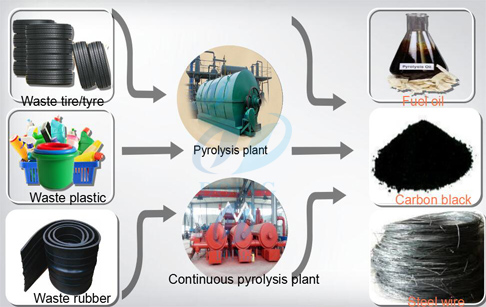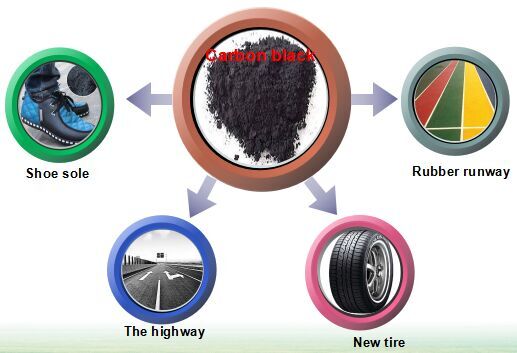
Tyre pyrolysis carbon black
Pyrolitic carbon black is produced as a solid by-product of waste tyre pyrolysis process after the gaseous fraction have been recovered and condensed into liquid fuels. For every 1 ton of tyres processed, 366 kg of crude carbon black is produced as a by-product. Pyrolysis has since been a solution to some as an environmentally friendly solution of producing products with high market value such as gas, oil and high tensile steel as presented in Fig.

Carbon black application
Carbon black consists of aggregates, defined as the smallest dispersible units, which are composed of partially fused, reasonably spherical primary particles. Surface area increase as primary particle size is reduced The aggregates, in turn, are held together by attractive van der Waals forces to form agglomerates. These forces increase as the size of the primary particle is reduced and agglomerate density is increased. Characterization of the surface properties of carbon black in terms of surface activity has been difficult compared to the other fundamental properties. However, surface activity has been evaluated in terms of oxygen content and/or moisture adsorption rate For polar carbon black surfaces, oxygen content and acidity are important measures of the effective surface activity 。 Sulphur is one of the most common impurities in carbon black. It can be introduced with the tyre rubber feedstock. Inorganic contaminants in carbon black, such as Si, Al, and Cu can also be introduced with the rubber feedstock in the form of trace metals, cracking catalyst residues, and from the carbon black reactor . It is necessary to obtain surface chemical states of these elements in terms of surface element distribution /concentration and chemical structure for the surface chemistry information on carbon black



